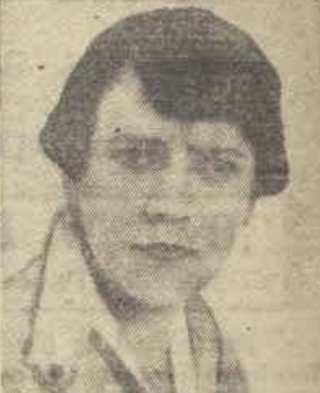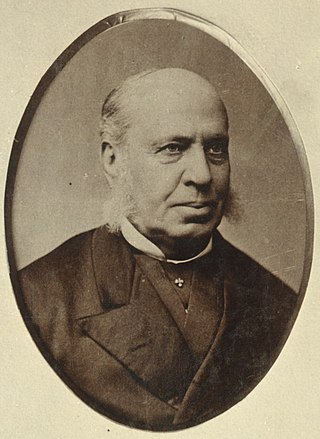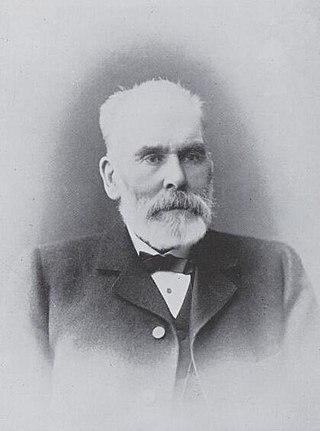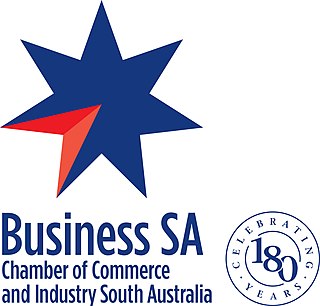Related Research Articles

Lobethal is a town in the Adelaide Hills area of South Australia. It is located in the Adelaide Hills Council local government area, and is nestled on the banks of a creek between the hills and up the sides of the valley. It was once the centre of the Adelaide Hills wool processing industry, which continued until around 1950. The mill buildings are now used by a number of cottage industry and handcraft businesses. At the 2016 census, Lobethal had a population of 2,135.

The Australian Chamber of Commerce and Industry (ACCI) is Australia's largest and most representative business association, comprising state and territory chambers of commerce and national industry associations. ACCI represents Australian businesses of all shapes and sizes, across all sectors of the economy, and from every corner of the country.

Sir David John Gordon was an Australian politician. He was a member of the Australian House of Representatives from 1911 to 1913, before going into state politics and becoming a member of the South Australian Legislative Council from 1913 to 1944. He was briefly Minister of Education and Minister of Repatriation under SA Premier Archibald Peake in 1917.

Sir Edward Wheewall Holden was an Australian industrialist who took his family carriage and saddlery business, Holden & Frost, into a partnership with General Motors to create Australia's first automobile manufacturer, General Motors-Holden's Ltd.

Alice Grant Rosman was an Australian novelist.

F. H. Faulding & Co was a pharmaceutical company founded in Adelaide, Australia, in 1845 by Francis Hardey Faulding, a native of Swinefleet, near Goole in Yorkshire, son of Francis Faulding, a surgeon.

Philip Santo was a South Australian politician and businessman.
W. H. Burford and Sons was a soap and candle-making business founded in Adelaide in 1840 by William Henville Burford (1807–1895), an English butcher who arrived in the new colony in 1838. It was one of the earliest soapmakers in Australia, and up to the 1960s when it closed, the oldest. In 1878 he took his two sons Benjamin and William into partnership as W. H. Burford & Sons. Its expansion, accompanied by a number of takeovers, made it the dominant soap manufacturer in South Australia and Western Australia. Its founders were noted public figures in the young city of Adelaide.

Sir George Brookman KBE was a South Australian businessman who made a fortune from a gold discovery in Western Australia, and is remembered as a generous benefactor of the South Australian School of Mines and Industries and the University of Adelaide.
The Chronicle was a South Australian weekly newspaper, printed from 1858 to 1975, which evolved through a series of titles. It was printed by the publishers of The Advertiser, its content consisting largely of reprints of articles and Births, Marriages and Deaths columns from the parent newspaper. Its target demographic was country areas where mail delivery was infrequent, and businesses which serviced those areas.

James Martin was an industrialist and politician in the early days of the Colony of South Australia.
Quiz was a weekly newspaper published in Adelaide, South Australia from 1889 to 1910. Between 1890 and 1900 it was known as Quiz and The Lantern.

Thomas Henry Brooker was a politician in colonial South Australia. He was a member of the South Australian House of Assembly from 1890 to 1905, representing West Torrens (1890–1902) and Port Adelaide (1902–1905). He was Minister for Education and Minister for Industry in the Jenkins ministry from May 1901 to March 1902.
The Australische Zeitung was a weekly German-language newspaper published in Tanunda, South Australia from 1860 until it ceased publication during World War I in 1916 due to anti-German sentiment. The newspaper also existed in a variety of earlier names or merged publications, reflecting the fluid nature of the newspaper industry in Victorian gold rush era colonial South Australia. The long history of German language Australian newspapers reflects the considerable German-speaking population which settled in South Australia in the nineteenth century.

Duncan & Fraser Limited was a vehicle manufacturing company founded in 1865 in Adelaide, South Australia that built horse-drawn carriages and horse trams, and subsequently bodies for trains, electric trams and motor cars, becoming one of the largest carriage building companies in Australia.

The South Australian Employers' Chamber of Commerce and Industry is an independent and non-profit association representing businesses and employers in South Australia. It is a member of the Australian Chamber of Commerce and Industry. Business SA is South Australia’s largest membership-based employer organisation with over 4,000 members across 19 different industry sectors.
H. L. Vosz was an Adelaide, South Australia business, for a time Australia's largest supplier of paints and glass, the earliest progenitor of Dulux paints, and became the prosperous glass merchant A. E. Clarkson Ltd. The company was founded in a modest way by a painter, plumber and glazier of more than usual business acumen, who unwittingly became the name behind many of the stained glass windows in South Australian churches and public buildings.
Laurie Phillip Lawrence was a businessman and philanthropist in South Australia.
Albert Edwin "Bert" Hamilton (1873–1962) was a South Australian public accountant who had a significant involvement with several major institutions.
Harold Edward Winterbottom was secretary of the South Australian Chamber of Manufactures 1907–1947 and organiser of various major public functions in Adelaide, South Australia.
References
- 1 2 3 4 5 "There Is Nothing You Want that Australia Can't Produce". The Register (Adelaide) . South Australia. 22 October 1928. p. 7. Retrieved 5 May 2020– via Trove.
- ↑ "The Lobethal Wool and Tweed Factory". The Express and Telegraph . South Australia. 8 November 1875. p. 3. Retrieved 5 May 2020– via Trove.
- ↑ Barnier, Cheryl Notable Australians Paul Hamlyn Pty Ltd.1978 ISBN 0 86832 0129
- ↑ "To the Editor". Adelaide Observer . Vol. XLII, no. 2306. South Australia. 12 December 1885. p. 11. Retrieved 5 May 2020– via National Library of Australia.
- ↑ "About Business SA". Chamber of Commerce and Industry. Retrieved 18 August 2019.